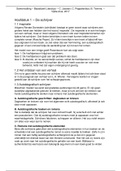Summary
Summary Personnel and Organization (Bridging program / Master of business administration)
- Module
- Institution
This document encompasses the entire class of Personnel and Organization taught in the bridging program of the master of business administration of KU Leuven at the Brussels campus.
[Show more]












